Reto NaturalMedicine Mes de Noviembre: Medicinas Herbales (Esp - Eng)
Reto NaturalMedicine Mes de Noviembre: Medicinas Herbales (Esp - Eng)
(English version below)
Feliz y bendecido presente para todos,
Desde que vi el reto del mes de noviembre de la Comunidad de Natural Medicine, quise probar con el tema de medicinas herbales para motivarme a leer sobre este tema que desde hace tiempo lo tengo pendiente, y debo decirles que fue muy interesante saber que podemos encontrar muchas plantas con efectos medicinales súper poderosos.
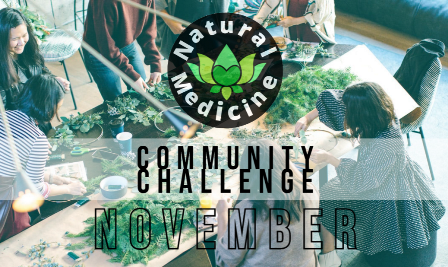
En una de las preguntas del reto nos invitan a:
Si pudieras elegir tres (3) medicinas herbales para llevar contigo durante una crisis, ¿cuáles serían?
Realmente es todo un desafío porque cuando empecé a leer quise llevar todas las plantas que había leído en el botiquín, así que casi que hice un juego de selección al azar de tipo “De tin marín de don pingüé…”
Sin más preámbulos, les cuento qué plantas terminaron dentro de mi selección:
ALOE VERA
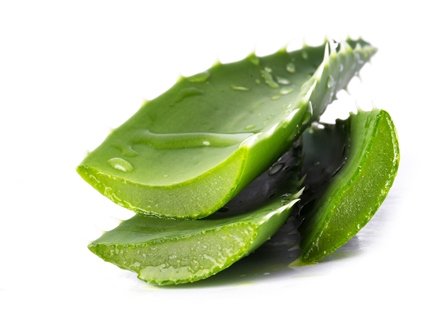
Fuente: Freepik
Dentro de las propiedades más resaltantes de la Aloe Vera se encuentran: Antiséptico, cicatrizante, calmante y digestivo.
Recuerdo que cuando era niña mi hermana mayor tuvo una terrible quemadura de primer grado en las manos y mi mamá uso esta planta de sábila para ayudarla a cicatrizar, todos pensamos que le quedarían unas cicatrices en sus manos terribles y afortunadamente no le quedó rastro alguno de aquél incidente.
Leyendo sobre esta planta, me di cuenta que una de sus propiedades más resaltantes es su capacidad para regenerar células de la piel y tejidos, por ello me parece importantísimo llevarla en el botiquín porque además de las quemaduras, también pudiera ser muy útil en el caso de una cortada, picaduras de insectos, psoriasis, ampollas, irritaciones, insolación o cualquier lesión en la piel. Incluso una cosa que me sorprendió mucho de sus propiedades, fue el uso para eliminar hongos y virus, y sirve como un exfoliante suave para eliminar las células muertas de la piel, manteniéndola saludable.
Adicionalmente, tiene efecto analgésico y antiinflamatorio, protege el sistema inmunitario y tiene acción digestiva y depurativa. Por sus propiedades analgésicas y antiinflamatorias, podemos masajear el gel de sábila sobre luxaciones, esguinces, tendinitis, lumbago y golpes. En el caso del sistema digestivo, es recomendable para ayudar a la cicatrización interna de úlceras, también es un laxante suave y ayuda en casos de colon irritable, entre otros.
Voy a indagar un poco más sobre esta planta, pero luego de leer esta información básica tengo ganas de incorporar su consumo a mi dieta para medir sus resultados a nivel digestivo.
2. JENGIBRE
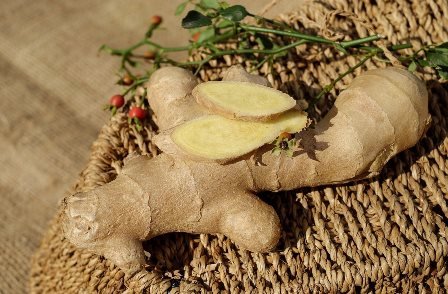
Fuente: Pixabay
El Jengibre es antibacteriano, mejora la circulación, es antiinflamatorio, y muy útil para mejorar problemas del sistema respiratorio y digestivo.
En la investigación que hice del jengibre, vi algunas recomendaciones de hacer una cocción del jengibre con harina de linaza para usarlo como un cataplasma para dolores reumáticos y neurálgicos.
En el caso de las enfermedades respiratorias (muy frecuentes en estos tiempos) se puede hervir el jengibre con canela y clavo de olor para potenciar sus efectos antibacterianos, e incluso agregar zumo de limón (aunque estos últimos serían ingredientes adicionales dentro del botíquin).
Adicionalmente, se ha comprobado que el uso del jengibre ayuda a disminuir el exceso de acidez gástrica y también el nivel del colesterol, de aquí su relevancia en el tratamiento de afecciones digestivas.
Otro tips para su uso, es que se puede masticar una rodaja pequeña y fina de jengibre para combatir el mal aliento y los dolores de muelas.
Y aquí les comparto el último dato curioso que encontré del jengibre:
Mejora la movilidad de los espermatozoides.
3. TORONJIL
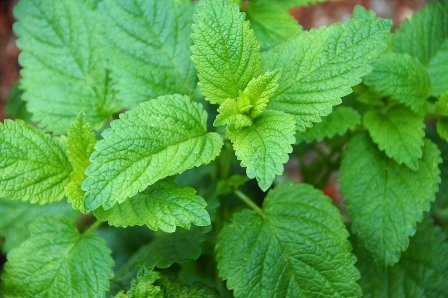
Fuente: Pixabay
Aunque es más comúnmente conocida por su efecto sedante y para ayudar a conciliar el sueño, es una planta muy versátil para ayudar en otras áreas, de hecho se caracteriza también por sus efectos: tónico, digestivo, antiespasmódico, antiséptico y carminativo.
Les confieso que no estaba familiarizada con esta palabra “carminativo”, por ello busqué su significado en Wikipedia según la cual: Un carminativo es un “medicamento o sustancia que favorece la disminución de la generación de gases en el tubo digestivo y con ello disminuyen las flatulencias y cólicos. El efecto se refiere a un efecto antiespasmódico en los músculos estomacales lisos y a un efecto de disminución de la fermentación en la flora intestinal”.
Es también cicatrizante, muy útil en el caso de picaduras de insectos.
Ahondando en sus beneficios, estuve leyendo que ayuda a aliviar dolores reumáticos, calambres o espasmos en el estómago, taquicardia, mareos, diarreas, ansiedad e insomnio. También ayuda a calmar el asma y jaquecas de origen nervioso.
Gracias por visitar mi Blog, espero te haya resultado interesante mi investigación. Si deseas saber más sobre los retos de NaturalMedicine para el mes de noviembre, consulta este enlace

NaturalMedicine Challenge November: Herbal Medicine
Happy and blessed present for all,
Since I saw the challenge of the month of November of the Natural Medicine Community, I wanted to try with the topic of herbal medicines to motivate me to read about this topic that I have been reading for a long time, and I must tell you that it was very interesting to know that we can find many plants with super powerful medicinal effects.

In one of the questions of the challenge they invite us to:
If you could choose three (3) herbal medicines to take with you during a crisis, what would they be?
It's really a challenge because when I started reading I wanted to take all the plants I had read in the medicine first aid kit, so I almost made a random selection game like "De tin marín de don pingüé..."
Without further ado, I tell you which plants ended up in my selection:
ALOE VERA
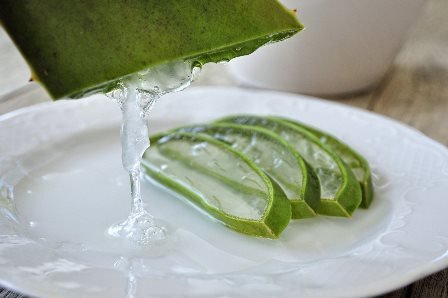
Fuente: Pixabay
Among the most outstanding properties of Aloe Vera are Antiseptic, healing, soothing and digestive.
I remember that when I was a child my older sister had a terrible first degree burn on her hands and my mother used this aloe vera plant to help her heal. We all thought that she would have some terrible scars on her hands and fortunately she had no trace of that incident.
Reading about this plant, I realized that one of its most remarkable properties is its ability to regenerate skin cells and tissues, so I think it's very important to carry it in the first aid kit because in addition to burns, it could also be very useful in the case of a cut, insect bites, psoriasis, blisters, irritations, sunstroke or any injury to the skin. Even one thing that surprised me a lot about its properties, was the use to eliminate fungi and viruses, and serves as a gentle exfoliant to remove dead skin cells, keeping it healthy.
Additionally, it has an analgesic and anti-inflammatory effect, protects the immune system and has a digestive and purifying action. Due to its analgesic and anti-inflammatory properties, we can massage the aloe vera gel on dislocations, sprains, tendinitis, lumbago and bruises. In the case of the digestive system, it's recommended to help internal healing of ulcers, it's also a mild laxative and helps in cases of irritable colon, among others.
I´m going to investigate a little more about this plant, but after reading this basic information I feel like incorporating its consumption into my diet to measure its results at the digestive level.
2. GINGER

Fuente: Pixabay
Ginger is antibacterial, improves circulation, is anti-inflammatory, and very useful for improving problems of the respiratory and digestive system.
In the research I did on ginger, I saw some recommendations to make a cooking of ginger with flaxseed flour to use it as a poultice for rheumatic and neuralgic pains.
In the case of respiratory diseases (very frequent in these times) you can boil ginger with cinnamon and cloves to enhance its antibacterial effects, and even add lemon juice (although the latter would be additional ingredients within the first aid bottling).
Additionally, it has been proven that the use of ginger helps to reduce excess gastric acidity and also the level of cholesterol, hence its relevance in the treatment of digestive disorders.
Another tip for its use, is that you can chew a small, thin slice of ginger to fight bad breath and toothaches.
And here I share with you the last curious fact I found about ginger:
It improves the mobility of the spermatozoa.
3. TORONJIL
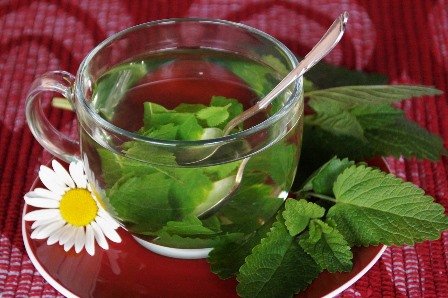
Fuente: Pixabay
Although it's more commonly known for its sedative effect and to help sleep, it's a very versatile plant to help in other areas, in fact it's also characterized by its effects: tonic, digestive, antispasmodic, antiseptic and carminative.
I confess that I was not familiar with this word "carminative", so I looked up its meaning in Wikipedia according to which: A carminative is a "medicine or substance that promotes the reduction of gas generation in the digestive tract and thus reduces flatulence and colic. The effect refers to an antispasmodic effect on the smooth stomach muscles and a decrease in fermentation in the intestinal flora".
It's also healing, very useful in the case of insect bites.
Delving into its benefits, I was reading that it helps to relieve rheumatic pain, cramps or spasms in the stomach, tachycardia, dizziness, diarrhea, anxiety and insomnia. It also helps to calm asthma and headaches of nervous origin.
Thanks for visiting my blog, I hope you found my research interesting. If you want to know more about the challenges of NaturalMedicine for the month of November, check this link
Translated with www.DeepL.com/Translator (free version)

Transferencia de Lotus / Lotus Transfer


Publicaciones recientes / Recent publications:
- Abundance.Tribe's BiWeekly Question - Can Human Nature Ever Be Changed? And If So, Should It Be And Why? (Esp - Eng)
- Iniciativa: Crea un acróstico para Hive


Yo si que no sabría utilizar ninguna de ellas hahahaha. Bueno, el jengibre si para té, eso me ayuda muchísimo cuando estoy congestionada! Maravilloso post querida.
Gracias amiga por pasarte por aquí. El toronjil también lo puedes tomar en té y la sábila puedes sacar el cristal de sábila y tomarlo o untarlo en la piel, dependiendo del uso que le quieras dar. No soy muy experta en el tema, estoy leyendo y me he encontrado cosas muy interesantes 😊
Gracias por visitarme 🤗
Muy bien por este articulo, la verdad me parece un recorrido digno de aprender. Yo también fuera elegido la Aloe Vera y el Jengibre, son de mis favoritas. Además que la Aloe Vera sirve para cientos de cosas y el Jengibre ni se diga. Hasta para los alimentos que podemos consumir, estas dos plantas pueden ser útil, ya lo he probado antes. Buena publicación, me encanta. Bendiciones!
Gracias!!! La verdad me sorprendi con las propiedades, sabía que la sábila era muy buena para la piel, pero no tenía idea de todos los usos que podemos darles para sanar otras cosas, igual que el jengibre, pensé que era bueno para dolores de gargantas y gripes, y sirve para muchas otras cosas.
Es muy interesante aprender sobre otras formas de curación natural que podemos tener al alcance de la mano, además de accesible no perjudicial x efectos secundarios.
Gracias por visitarme, un abrazo 🤗
Thankyou for engaging on a #naturalmedicine post!
Thanks you very much. Blessings ✨
https://twitter.com/MiriannaLaCruz/status/1329832341338984448
Excelentes elecciones todas las conozco y las he usado.
En los jardines de la Urbanización hay mucha sábila y ademán una planta enorme de Toronjil.
En mi juventud me queme la palma de una de mis manos con una plancha a vapor y gracias a la madre de una amiga conocí parte de las propiedades de la sábila. Realmente es una planta maravillosa.
Si, realmente creo que no son muy conocidas las propiedades de estas plantas y son realmente excelente!!!
Te cuento que la quemada de mi hermana fue xq había exprimido unos limones para hacer jugo y luego no se lavo bien las manos y salió al patio a manejar bicicleta, estuvo un buen rato en el sol y cuando se percató tenía todas las manos llenas de ampollas, se le pusieron horribles!! No podía agarrar siquiera un cubierto y la sábila fue realmente milagrosa gracias a Dios 🙏🏻
The only one I was uncertain about was TORONJIL - but we call it lemon balm, which I am familiar with! Three great choices there - well done and thanks for entering! xx @riverflows
Thank you very much @riverflows for encouraging me to research this topic 😊
Esta publicación está buenísima @miriannalis, me gusta mucho como enumeraste las propiedades de cada planta; de hecho, fue tu post el que me motivó a participar en el reto, porque estaba dudosa, ya que no puede elaborar el ungüento que sugieren hacer. Me gustan las tres plantas y las tres las cultivo en mi solar y las consumo recién cosechadas, bien fresquitas. Un gran saludo.
Ay que bueno!!! Me alegra que te haya gustado, me parece maravilloso que tengas esa bendición de poder tener tu propio huerto.
Me encanta que te haya motivado a participar en el reto, visitaré tu publicación para apoyarte.
Un abrazo 😘
¡Chévere! Ojalá te guste. Un abrazo.